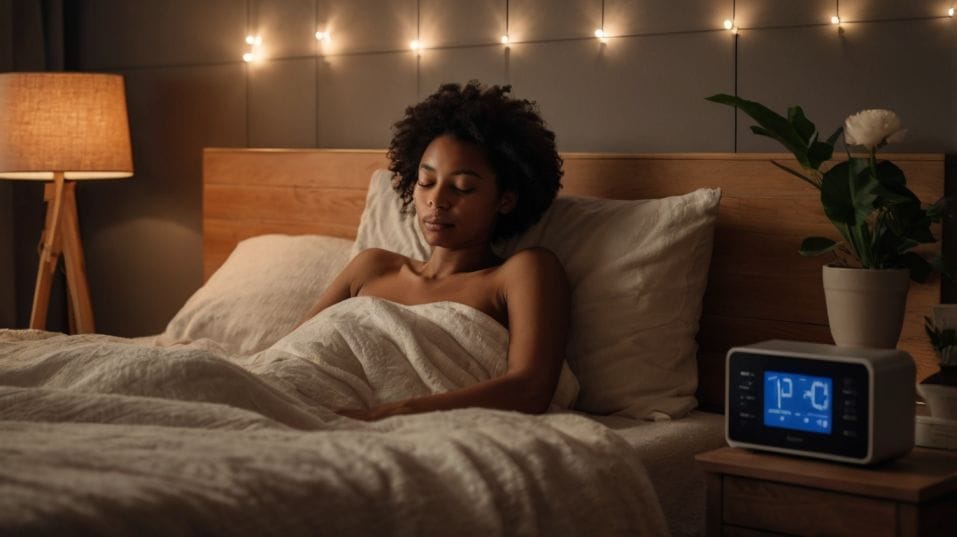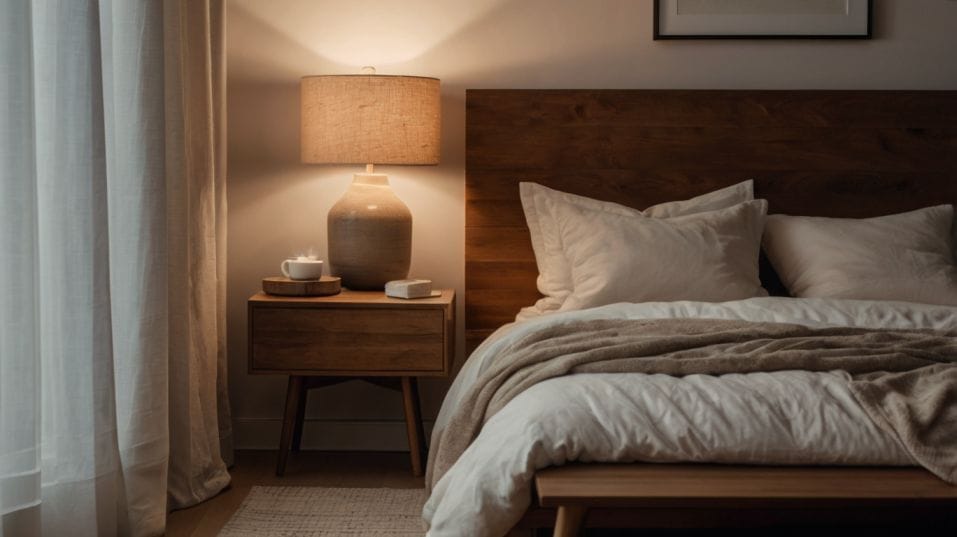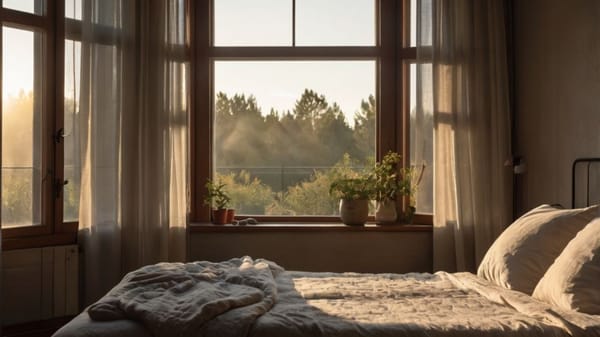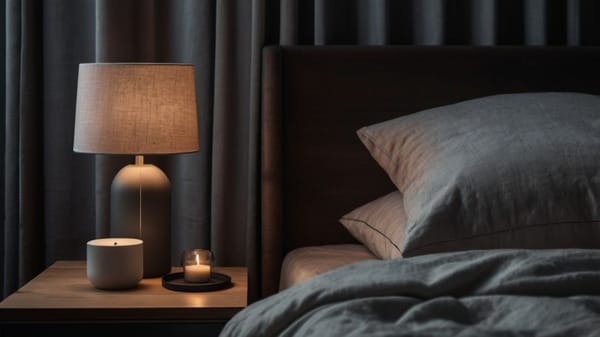Using Soundscapes for a Calmer Transition to Sleep
Fall asleep faster and stay asleep longer with soundscapes. Learn how curated audio can train your brain for deeper, better rest—naturally.

Ever wish your brain came with a sleep switch? If quiet nights still leave your mind racing, soundscapes might be the missing link.
These simple audio tools help you shut down faster—not by forcing sleep, but by guiding your brain into rest mode.
Whether you're just starting to improve your sleep or want an easy upgrade with real science behind it, this is where better nights begin. Press play, and let your body take over.
How Sound Impacts Sleep—And Why You Should Care
Your brain isn’t built for sudden silence. It evolved surrounded by soft, repetitive environmental sounds—wind through trees, water flowing, distant animal calls.
In modern life, we’ve replaced that with a barrage of artificial noise: traffic, phone alerts, ambient conversations through the wall.
Even if you're not fully awake, your brain is still processing all of it. That constant low-level stimulation keeps your nervous system alert when it should be winding down.
Soundscapes work by replacing chaos with calm. You're not adding noise—you’re curating it.

Controlled, consistent audio cues override environmental distractions and help nudge your nervous system into a parasympathetic state, where the body slows heart rate, lowers blood pressure, and starts repairing itself.
This isn't just helpful—it’s essential for high-quality rest. And here's the kicker: your brain can be trained to associate a specific soundscape with sleep.
With enough repetition, hearing that same ambient sound becomes a trigger, like muscle memory for your mind. Just hearing it tells your body: it's time to let go.
The Science Behind the Calm
Different sound types interact with your brain in different ways. Here's what’s happening under the hood:
White Noise
A steady hiss covering all frequencies. It masks sudden, sharp noises that might otherwise wake you. Think: a fan, static, or soft radio hum.
Pink Noise
A softer, deeper version of white noise. Studies suggest it may enhance deep sleep and memory consolidation by aligning with brainwave rhythms.
Brown Noise
Even deeper and richer—more of a low-frequency rumble. It’s less sharp than white noise, and for some, it feels grounding and heavy, helping to reduce mental chatter.
Natural Soundscapes
Rainfall, ocean waves, rustling leaves. These are biologically familiar. Our brains register them as safe, stable environments. They're less about masking and more about signaling peace.
The right sound helps regulate the hypothalamus—your brain's sleep command center. This influences your circadian rhythm, body temperature, and melatonin production.
It’s why listening to the wrong kind of audio—like music with lyrics, or anything with sudden volume changes—can sabotage your sleep instead of support it.
Finding What Works for You
Not every soundscape works for every person. Some people crave the white-noise wash of a box fan. Others need the immersive, low-end rumble of brown noise.
If you grew up near the ocean or in a rainy climate, those natural patterns may feel instantly relaxing. The point is: your brain knows what “safe and calm” feels like—you just have to find the sound that matches it.
Start by testing a few different sound types. Use a sound machine, an app with high-quality looping, or a playlist with no gaps or jarring transitions.
Keep the volume low and constant. The goal is to create a sonic background your brain doesn’t have to interpret—something neutral but comforting.
Try pairing different sounds with your sleep prep. Listen while you brush your teeth or dim the lights. Let your mind link that sound with winding down.
Over time, the association will build itself. You’re not forcing sleep. You’re preparing your mind to drift into it naturally.
Using Soundscapes Strategically in Your Routine
This isn’t a one-night fix—it’s a habit. And like any good habit, the simpler it is, the more likely it’ll stick. Here’s how to use soundscapes like a pro:
- Make them the last input of your day. Shut off your phone notifications. Don’t pair soundscapes with scrolling. You’re trying to disconnect, not stay stimulated.
- Use them consistently. Even if you’re exhausted, turn them on. Your brain is learning that this sound = rest.
- Stick with a sleep-only sound. Don’t use the same audio when working or reading. You want your brain to make a clear link: this sound means it's time to shut down.
- Invest in the right gear if needed. If external noise is a problem, consider sleep headphones, a sound machine, or a pillow speaker. The tech should disappear into the background—you shouldn’t be thinking about it at all.
- Let it play through the night or fade gradually. Some people sleep better with continuous sound. Others prefer a fade-out after 90 minutes. Choose what feels natural, not what seems “correct.”
It’s about training your nervous system to expect rest—and reinforcing that expectation every night until it becomes automatic.
Final Thoughts: Sleep Smarter, Not Harder
Soundscapes aren’t just a wellness trend—they’re a science-backed method for better sleep, deeper recovery, and smoother transitions out of high-stress brain states.
They don’t require willpower, fancy routines, or long adjustment periods. You press play. You lie down. You let your body do what it’s built to do.
If you're serious about waking up sharper, performing better, and feeling more like yourself, start here. Choose a sound tonight. Keep it consistent.
Let it guide your body into rest. The results will come quietly—but they’ll change everything. Start now. One sound. One night. Then repeat.




